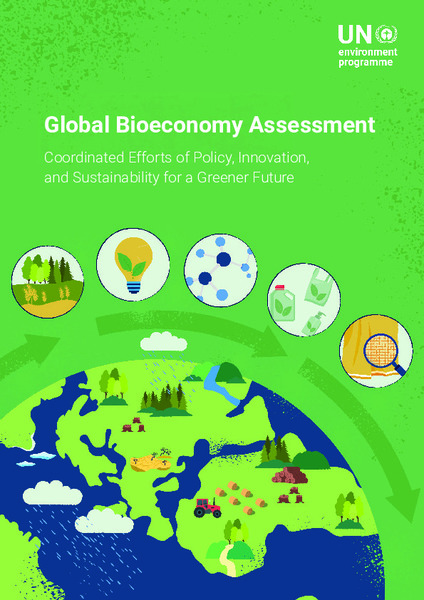Global Bioeconomy Assessment: Coordinated Efforts of Policy, Innovation, and Sustainability for a Greener Future

Date
2024-04Author
United Nations Environment Programme
Citation Tool
Bibliographic Managers
RT Generic T1 Global Bioeconomy Assessment: Coordinated Efforts of Policy, Innovation, and Sustainability for a Greener Future A1 United Nations Environment Programme YR 2024-04 LK https://wedocs.unep.org/20.500.11822/45332 PB United Nations Environment Programme AB TY - GEN T1 - Global Bioeconomy Assessment: Coordinated Efforts of Policy, Innovation, and Sustainability for a Greener Future AU - United Nations Environment Programme Y1 - 2024-04 UR - https://wedocs.unep.org/20.500.11822/45332 PB - United Nations Environment Programme AB - @misc{20.500.11822_45332 author = {United Nations Environment Programme}, title = {Global Bioeconomy Assessment: Coordinated Efforts of Policy, Innovation, and Sustainability for a Greener Future}, year = {2024-04}, abstract = {}, url = {https://wedocs.unep.org/20.500.11822/45332} } @misc{20.500.11822_45332 author = {United Nations Environment Programme}, title = {Global Bioeconomy Assessment: Coordinated Efforts of Policy, Innovation, and Sustainability for a Greener Future}, year = {2024-04}, abstract = {}, url = {https://wedocs.unep.org/20.500.11822/45332} } TY - GEN T1 - Global Bioeconomy Assessment: Coordinated Efforts of Policy, Innovation, and Sustainability for a Greener Future AU - United Nations Environment Programme UR - https://wedocs.unep.org/20.500.11822/45332 PB - United Nations Environment Programme AB -View/Open
Item Statistics
Display item statisticsMetadata
Show full item recordDescription
The bioeconomy, also known as the bio-based
economy, refers to the economic activity involving
the use of biotechnology and biomass in producing
goods, services or energy. It aims to reduce the
dependence on fossil fuels in the energy and
industrial sectors. Bioeconomy has been widely
accepted by different countries and regions as a
critical strategy for coping with fossil fuel shortage
and climate change, among other environmental
problems. Bioeconomy mainly utilizes biomass
resources to generate bio-based products. In terms
of biomass resources, they can be divided into three
generations. The first-generation biomass resources,
primarily edible biomass materials, present an
issue of “competing with people for food/land.” The
second-generation biomass resources are derived
from non-edible sources, mainly lignocellulosic
materials, which are accompanied by immature
processes for their efficient conversion into valuable
biofuels and other high-value bioproducts. Thirdgeneration
biomass resources represent an emerging
frontier in the world of sustainable bioenergy and
bioproducts, primarily consisting of algae or rapidly
synthesized biomass achieved through advanced cell
engineering techniques. This report focuses on
bioenergy, bio-based chemicals, bio-based plastics
and bio-based macromolecular materials (textiles
and paper) in technical conversion, highlighting the resources, dominating technical routes, challenges
and prospects.
Collections
Document Viewer
To read more, scroll down below.

